Aerodynamic Characteristics based on the Wing Tip Trajectory of a Humming Bird (by Kubo, 2023)
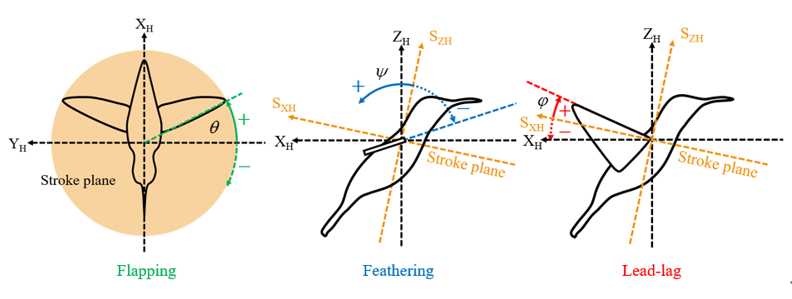
Wing attitude definition:
Each wing has three degrees of freedom, flapping, feathering, and lead-lag, which generates the various tip trajectories such as concave, figure-zero, and figure-eight shapes.

Fluid-structure (multi-body) Interaction simulation model:
The model consists of the body scanned from a biological specimen and the flat plate wings, which are connected by spring and damper. The CFD is conducted under the condition: incompressible, unsteady, turbulent, and overset mesh, using openFOAM.
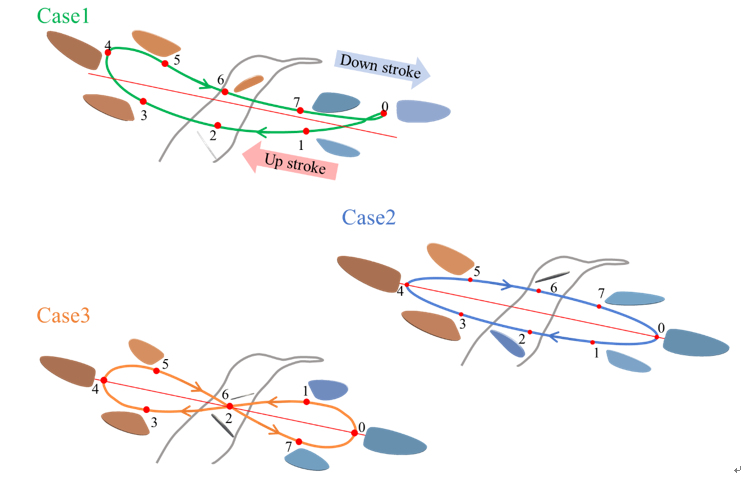
Simulation cases:
Case 1 is the humming bird trajectory.
Case 2 is the figure-zero-shaped trajectory.
Case 3 is the figure-eight-shaped trajectory.
Note that red show the stroke plane, blue is the upper side of the wing, and orange is the lower side.
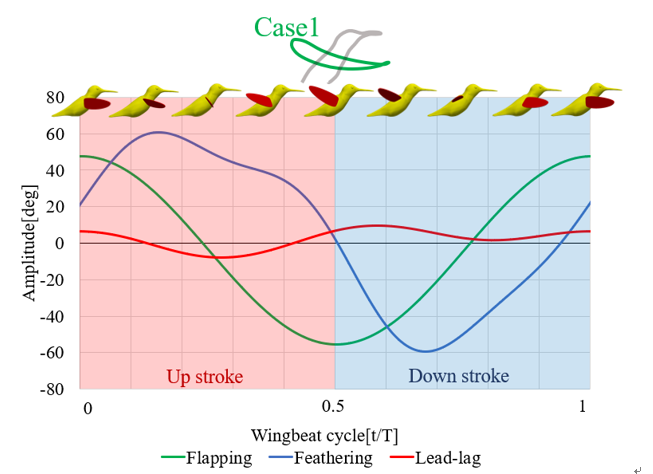
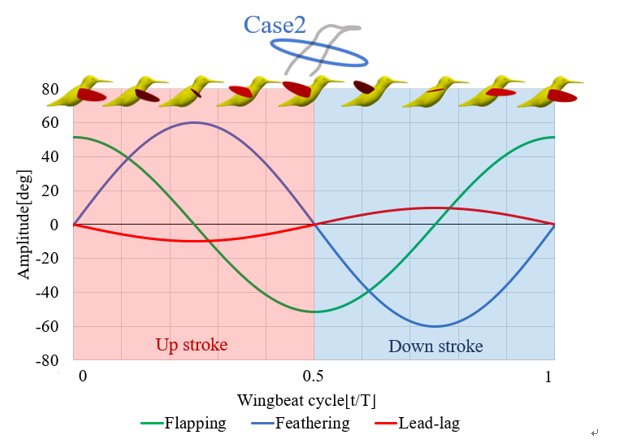
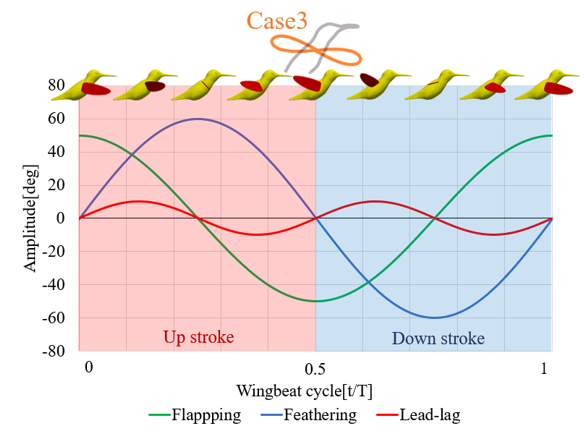
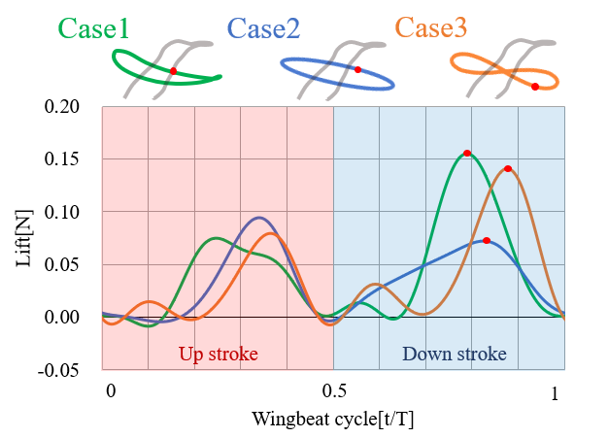
The average lift per stroke in Case 1 was the most, i.e., 4.29 gf (74% of the hummingbird weight of 5.8g). The analysis of both the deformation of the elastic membrane wing and the motion of the feathering will be needed.
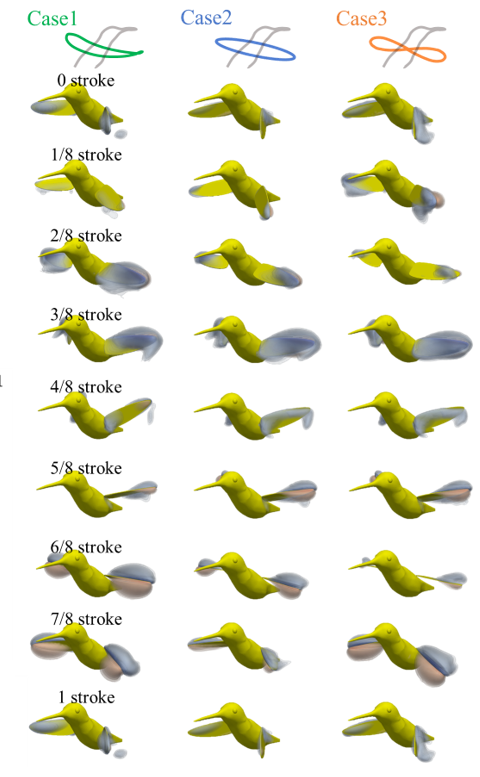
Pressure Contour Surface (Blue and red show negative and positive pressures, respectively):
The strong leading edge vortex (LEV) and wing tip vortex (WTV) were generated during the flap reversal phase from the upstroke to downstroke.
The fastest motion position of the wing tip depended on the combination among the feathering, lead-lag, and stroke plane and the angular velocity of Case 1 was the largest.
When the leading edge tilted in the direction of the stroke, the lift increased in case of valley-shaped wingtip trajectory and decreased in case of mountain-shaped one.
Reference:
. Kouki KUBO, Taketo KOMURA, and Koki KIKUCHI, Analysis of Aerodynamics Characteristics based on Wing Tip Trajectory, JSDE, 2024, in Japanese.